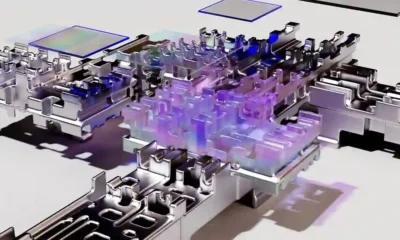
As a communication tool, nothing beats Signal. It offers end-to-end encryption for your messages, preventing law enforcement and mobile carriers from intercepting your data.
An xSignal is a designer-defined path for a signal between two pads (or nodes in associated nets). It can be used to scope matched length design rules.
1. Privacy
In an era of data-driven technology, the privacy and security of users have never been more critical. Xsignal’s commitment to robust security measures positions the company as a trailblazer in the pursuit of a decentralized internet, empowering individuals to reclaim their digital autonomy.
Signal’s most popular feature is its disappearing message and one-time media sending. This allows you to send photos or videos that can be viewed only once and won’t be saved on your device.
To create an xSignal, select the source and destination components, then right-click on one of them and choose the xSignals >> Create xSignals between Components command from the context menu. A dialog opens showing the source component and any nets connected to it.
2. Speed
An xSignal is a designer-defined signal path between two nodes. These can be two nodes within an associated net or they can be nodes in different nets separated by a series termination component.
This dialog enables you to create a new xSignal. Select the required start pad and end pad. These pads can be selected directly in the design space or they can be located using the PCB panel in Nets mode.
The software identifies all possible xSignal that can be created between these pads. The resulting xSignals are listed in the xSignals mode of the PCB panel. If a class has been specified, the xSignals are automatically added to this class.
3. Security
Signal is a typical one-tap install app available from your normal marketplaces and, like many other apps, allows you to communicate with other users by sending fully encrypted text, voice and video messages. The open-source app is free to use and has been used by many high-profile privacy icons including Edward Snowden.
xSignal mode uses a component-oriented approach to identify potential xSignals between your selected source and destination components. The software analyzes the nets connecting to the chosen source component and any associated series passive components and any branches that may be involved and will present a list of all possible xSignals for your review and selection.
4. Efficiency
The Create xSignals From Connected Nets command (available via the Design >> xSignals sub-menu from the main menus or by right-clicking in the PCB layout) enables you to define xSignals that extend outward from a selected series termination component such as a resistor network. The Wizard automatically analyses all nets currently connecting to the source component and to the destination components, identifying potential xSignals.
The resulting xSignals are named using the starting and ending pads of the xSignal, and they follow the path of connections that run between these pads. They also obey the routing topology that is defined for the underlying net, which is set by default to Shortest.
5. Flexibility
The xSignal Wizard uses a component-oriented approach to identifying potential xSignals between a source and destination components. Once you select a source and destination component, the Wizard analyzes all possible paths between these two components, including through any series passive components along the way.
To use this feature, first select the start and end pads in question – either by selecting them directly from the design space or using Nets mode of the PCB panel. Then run the Create xSignal command to create the new xSignal. You can then name it and set up Matched Length design rules if required. This feature is a great way to quickly and easily generate the most common types of xSignal for your designs.
6. Fun
The xSignal Wizard is an easy to use tool that analyzes potential xSignals between a pair of output pins from different components. By selecting a source component and a target component, the Wizard will identify all possible paths between them – including routes through series passive components if required.
Once the xSignals have been identified, they can be created via the Design >> xSignals > Create xSignals from Connected Nets command or by right-clicking on one of the selected pads. Once the dialog is opened, select a class to associate the xSignals with (or create a new class) and click OK. The xSignals will then be created and displayed in a filtered view within the PCB editor.
Related posts:


Forex & Crypto
5 Best Ways to Earn Crypto While You Sleep in 2025
Categories
- Apps (1)
- Automotive (23)
- Beauty (7)
- Business (122)
- Celebrities (2)
- Digital Marketing (21)
- Ecommerce (2)
- Education (22)
- Entertainment (39)
- Events (6)
- Fashion (1)
- Features (4)
- Finance (1)
- Fitness (10)
- Food (2)
- Forex & Crypto (23)
- General (116)
- Health (48)
- House (61)
- Lifestyle (57)
- Marketing (8)
- Parenting (3)
- Pets (10)
- Real Estate (8)
- Safety and Security (14)
- Social Media (31)
- Sports (142)
- Technology (73)
- Travel (23)






















